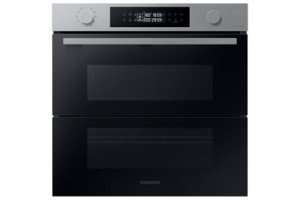Why People Don't Care About Built-In Oven

Understanding Built-in Ovens and Hobs: The Perfect Kitchen Combination
As modern-day cooking areas develop, built-in appliances are becoming progressively popular for both performance and looks. Amongst these appliances, built-in ovens and hobs stick out as important parts for any cooking enthusiast or home cook. This article checks out the benefits, features, and considerations surrounding built-in ovens and hobs. It likewise resolves typical questions, providing a detailed guide to these kitchen basics.
What are Built-in Ovens and Hobs?
Built-in ovens are integrated into kitchen cabinetry, developing a smooth, smooth appearance. They can be found in various types, consisting of standard, convection, and steam ovens, each dealing with different cooking methods. Hobs, on the other hand, are the cooking surface areas that incorporate with the kitchen countertop. They can be gas, electric, or induction, enabling cooks to choose based on their cooking design and energy choice.
Benefits of Built-in Ovens and Hobs
- Space-Saving: Built-in designs maximize kitchen area by removing the need for freestanding units, developing an open and airy environment.
- Visual Appeal: Their sleek design contributes to a contemporary, structured look in the kitchen.
- Improved Functionality: Built-in ovens frequently feature innovative cooking innovation, using a variety of functions like self-cleaning and smart controls.
- Modification: Manufacturers offer a range of finishes and styles, permitting homeowners to customize their appliances to match their kitchen design.
Kinds Of Built-in Ovens
1. Traditional Ovens
Conventional ovens use convected heat from the bottom and can be perfect for baking.
2. Convection Ovens
Convection ovens have a fan that flows hot air, guaranteeing even cooking. They reduce cooking time and are best for roasting meats or veggies.
3. Steam Ovens
Steam ovens utilize moist heat to cook food, maintaining nutrients and flavors. They are ending up being progressively popular among health-conscious cooks.
4. Microwave Ovens
These ovens provide quick heating and cooking and serve numerous functions, from reheating leftovers to baking.
Kinds of Hobs
1. Gas Hobs
Gas hobs utilize gas or propane for cooking. They supply immediate heat control, making them a preferred among expert chefs.
2. Electric Hobs
Electric hobs have strong or ceramic surfaces that warm up by means of electric coils. They are easy to clean but might take longer to heat than gas models.
3. Induction Hobs
Induction hobs utilize electromagnetic energy to straight heat pots and pans, providing rapid heating and energy efficiency. They cool down rapidly and supply a safer cooking experience.
Aspects to Consider When Choosing Built-in Ovens and Hobs
When picking built-in ovens and hobs, several elements should be considered:
1. Space Limitations
Measure the readily available area in your kitchen to make sure that the appliances will fit seamlessly into the cabinetry.
2. Cooking Style
Consider your cooking habits. If you frequently bake, a convection oven may be ideal. Meanwhile, induction hobs are terrific for safety and efficiency.
3. Spending plan
Prices differs substantially based upon features and brand names. Setting a budget helps narrow down the options.
4. Energy Source
Identify whether you desire gas or electric appliances. This decision can affect cooking performance and utility costs.
5. Aesthetics
Choose finishes and designs that complement your kitchen's design. Stainless steel is a popular choice for a modern appeal.
Comparison of Built-in Ovens and Hobs
| Function | Built-in Oven | Built-in Hob |
|---|---|---|
| Type | Convection, steam, etc. | Gas, electric, induction |
| Cooking Versatility | High | Moderate to high |
| Cleaning up Ease | Differs by model | Usually easy to clean |
| Setup Style | Integrated in kitchen cabinetry | Flush with countertop |
| Energy Efficiency | Differs by design | Induction normally most effective |
Frequently Asked Questions About Built-in Ovens and Hobs
1. Are built-in ovens more costly than freestanding designs?
Yes, built-in ovens normally feature a higher price due to their design and setup requirements. However, they typically use advanced features.
2. Can I replace my existing freestanding oven with a built-in model?
Yes, it's possible to replace a freestanding oven with a built-in design, but you may need to make modifications to your cabinetry and kitchen layout.
3. What upkeep do built-in ovens and hobs require?
Regular cleaning is essential. hob and built in oven package built-in ovens featured self-cleaning functions. It's likewise crucial to keep the hobs without spills and grease.
4. Are induction hobs safe for families?
Induction hobs are considered much safer than gas or electric options because they only warm the cookware, reducing the threat of burns or accidents.
5. How can I maximize the performance of my built-in oven and hob?
To maximize performance, always pre-heat the oven when required, use the correct size pots or pans on the hob, and think about using the recurring heat from your hob after cooking.
Built-in ovens and hobs supply numerous advantages, making them popular options for modern cooking areas. Their space-saving styles, advanced features, and aesthetic appeal add to their high demand. By thinking about factors like area, cooking style, and budget, house owners can pick the ideal combination of appliances that best suit their culinary requirements. Whether through gas, electric, or induction hobs, and a range of oven types, the best built-in kitchen appliances can enhance the cooking experience while raising the total visual of the kitchen.

